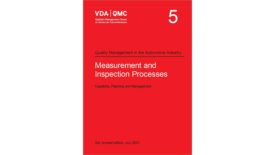Home » Keywords: » risk-based management
Items Tagged with 'risk-based management'
ARTICLES
Measurement
Too much measurement uncertainty leads to incorrect conformity decisions, incorrect assessment of machines and production processes, poorer process quality and thus, increased production and testing effort.
Read More
Quality 101
Learns from ISO 9001:2015
Having conducted well over 700 audits, I've noticed some patterns.
March 29, 2023
Why Adopt Risk-Based Thinking?
Automated risk management tools can help manufacturers incorporate risk-based thinking into their processes.
June 3, 2021
Understanding How Management Involvement Impacts the Risk of Quality Cost
Here’s a hidden gem in the pursuit of quality.
November 8, 2019
The Evolution of Hazard- and Risk-based Design and Compliance
A risk-based approach starts with the premise that any product can pose a wide range of risks.
November 8, 2018
INDUSTRY HEADLINE
‘Risk-Based Everything’ the Focus at Ideagen’s Horizons Seminar in Dubai
February 23, 2017
Stay in the know with Quality’s comprehensive coverage of
the manufacturing and metrology industries.
eNewsletter | Website | eMagazine
JOIN TODAY!Copyright ©2024. All Rights Reserved BNP Media.
Design, CMS, Hosting & Web Development :: ePublishing







